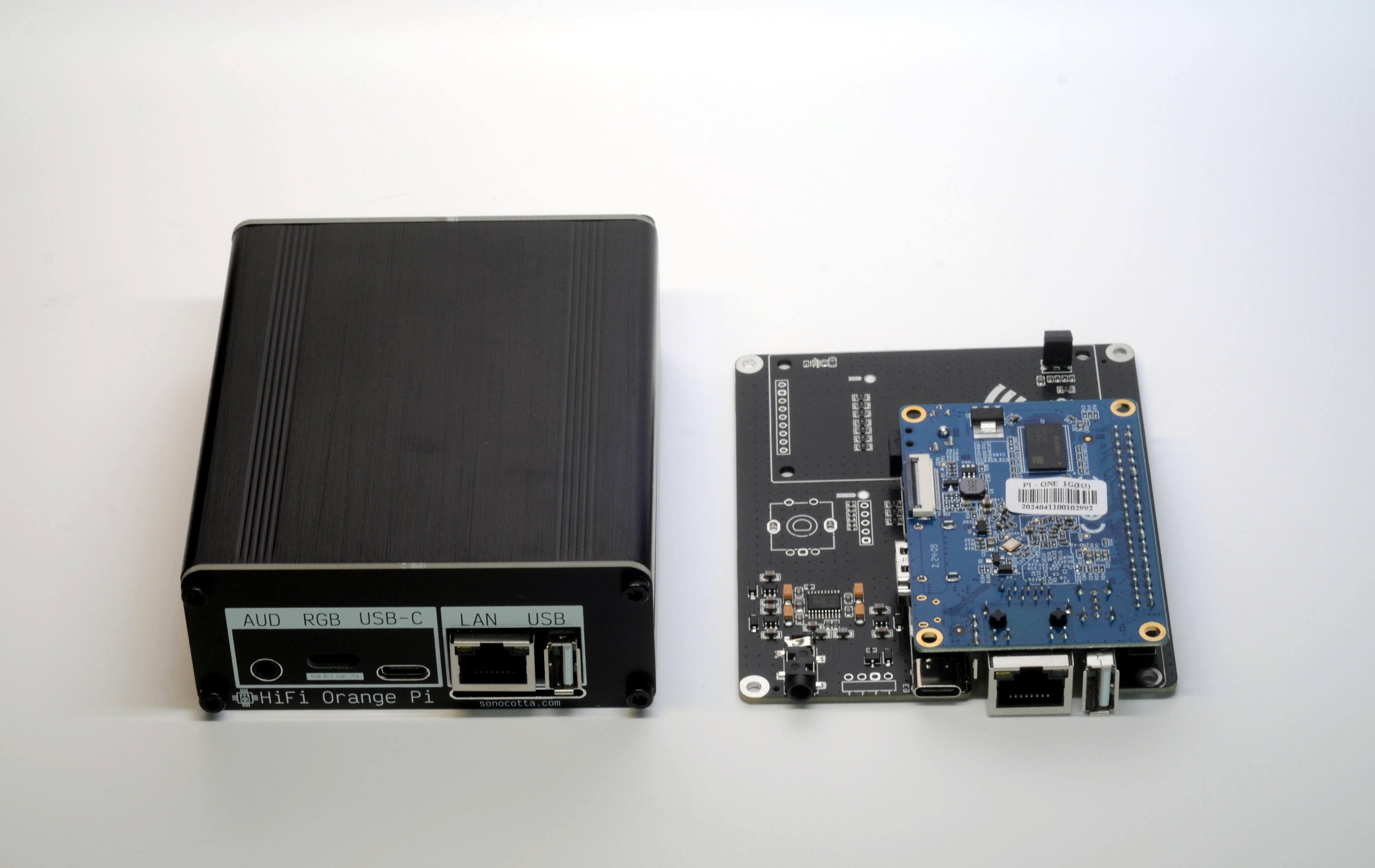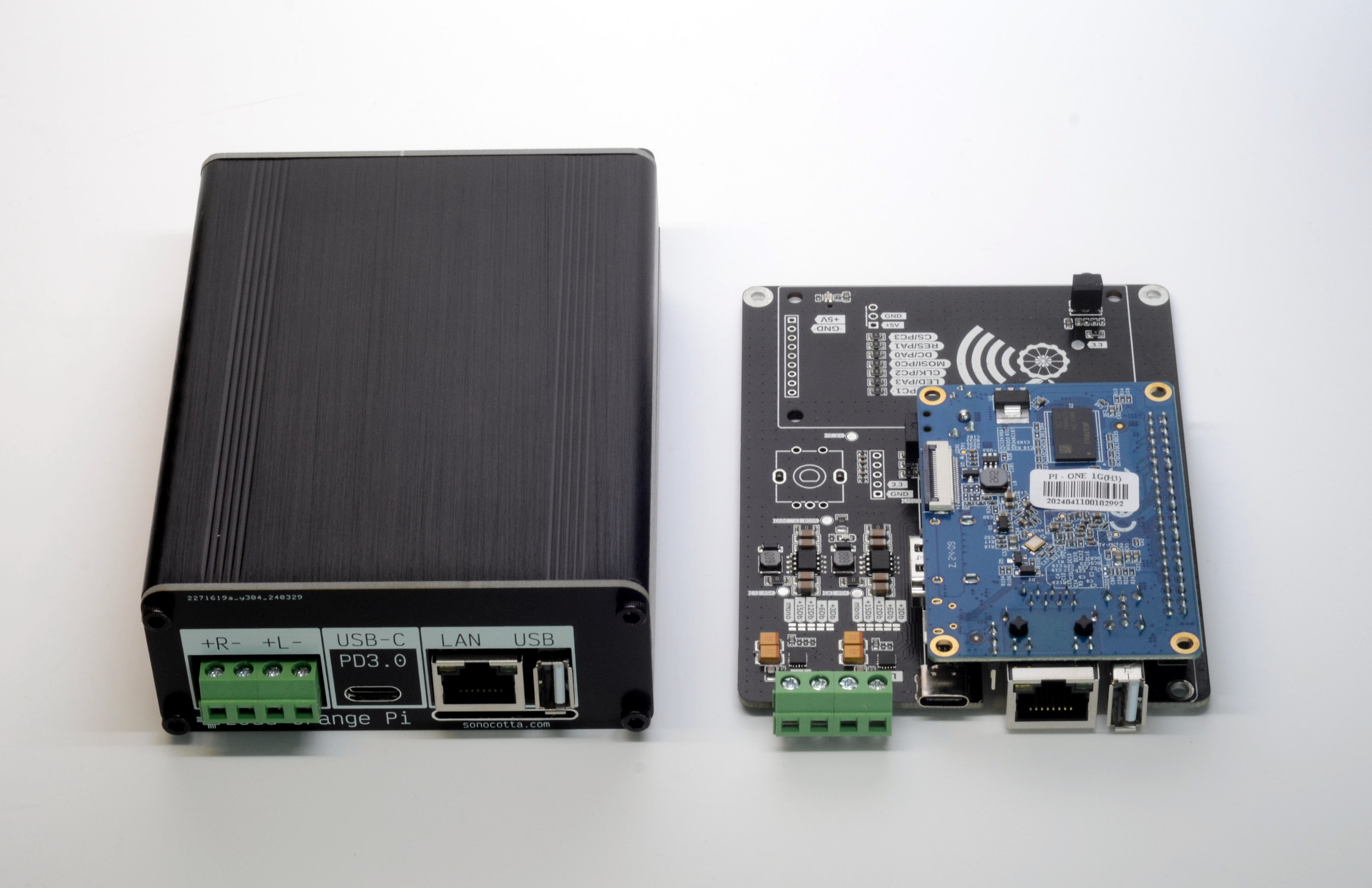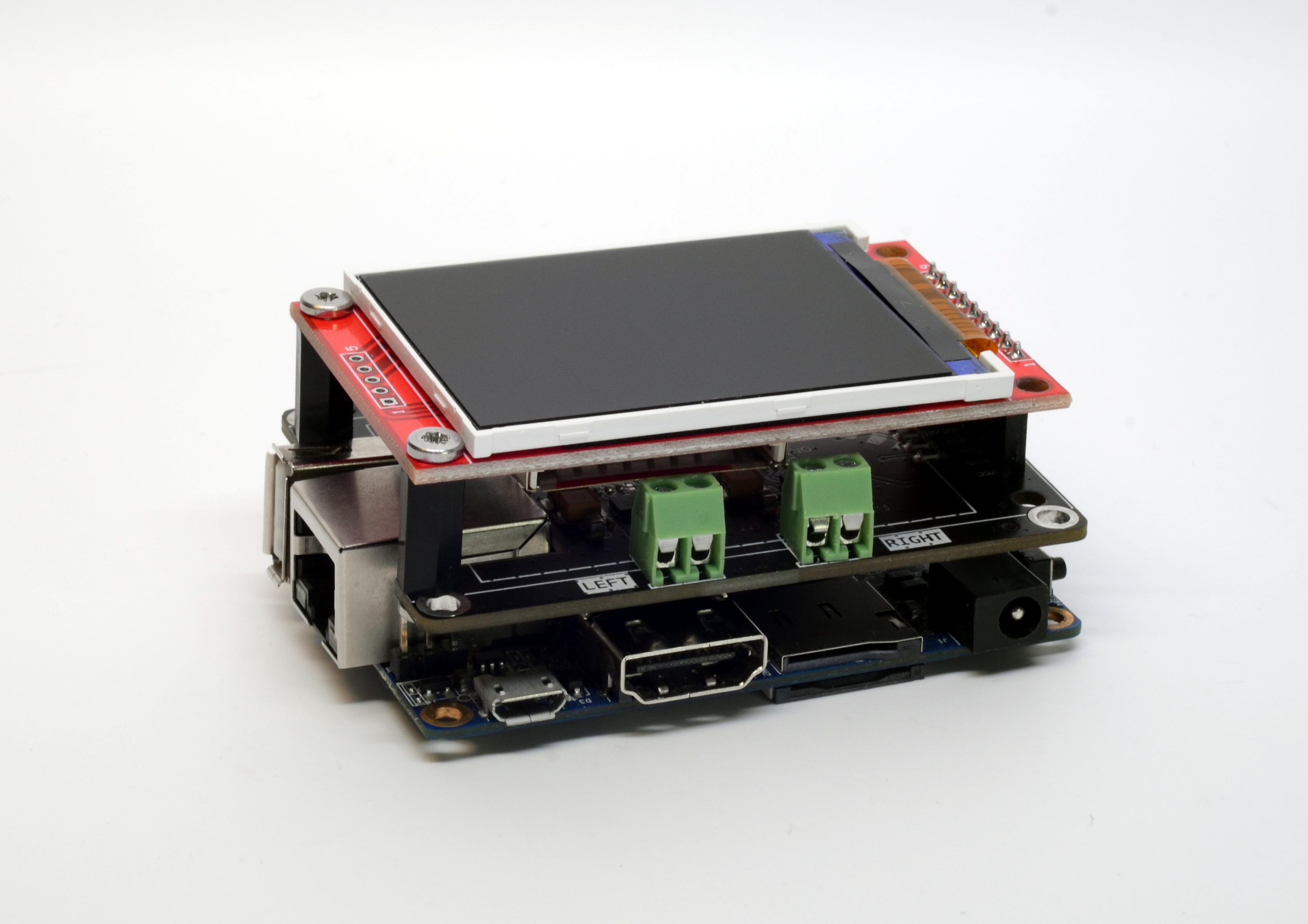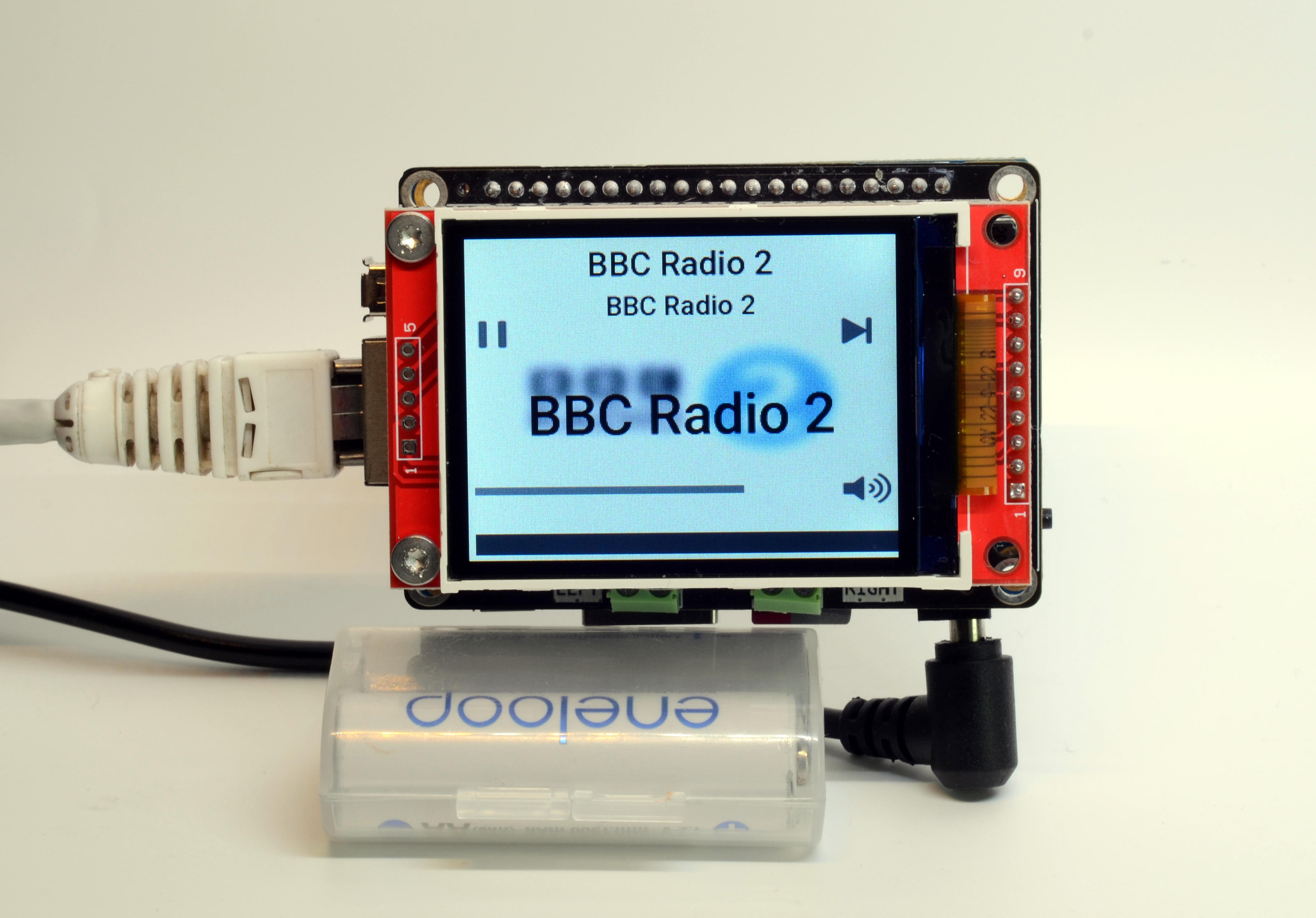-
The big redesign
05/08/2024 at 10:37 • 0 commentsFollowing my Raspberry Pi and Onion Omega Media Center series, I decided to re-design the Orange Pi version of the board. The main reason for that was the price and complexity of the original design. Both casing and PCB costs could be halved based on my current knowledge and resources, and this is what I did.
First I'm using an off-the-shelf aluminum case with a basic design. Both the front and back panels are custom-made, but they do not have any components on them, which is much cheaper than before.
Second, both the screen and rotary encoder are headers hidden inside, while I come up with a better approach for the front panel. So they are more of a development platform at this point.
Moving forward I will refine those design choices further, but for now, it looks great, it sounds great, it is fantastic fun to develop with and that's good enough for me.
-
Initial prototype
11/25/2023 at 18:37 • 0 commentsInitially I made a line-level Hi-Fi version of the board. I use it myself with the off-the-shelf amp to sort of modernize pre-internet era audio gear with Spotify and the rest.
It works great, but it lacks proper integration between music source and the amp. I even connected the amp via relay, but you cannot control input switch remotely etc.
At some point I came to idea of standalone device that would have amp on-board. In that setup amp would probably not be that sophisticated, but at least I can have as much control over it, as I need.
Prototype for the title device was a Hat that accommodated most of the Media center hardware but in compact shape
At that stage it also made sense to add screen, since now it self-contained. It works more or less same way as Pimoroni's Pirate Audio, but it required porting to Orange Pi, since all GPIO libraries are platform specific.
End result is 3-layer stack which works perfectly, but is not very neat to use. Hence the idea of Media Center project
 andriy.malyshenko
andriy.malyshenko



